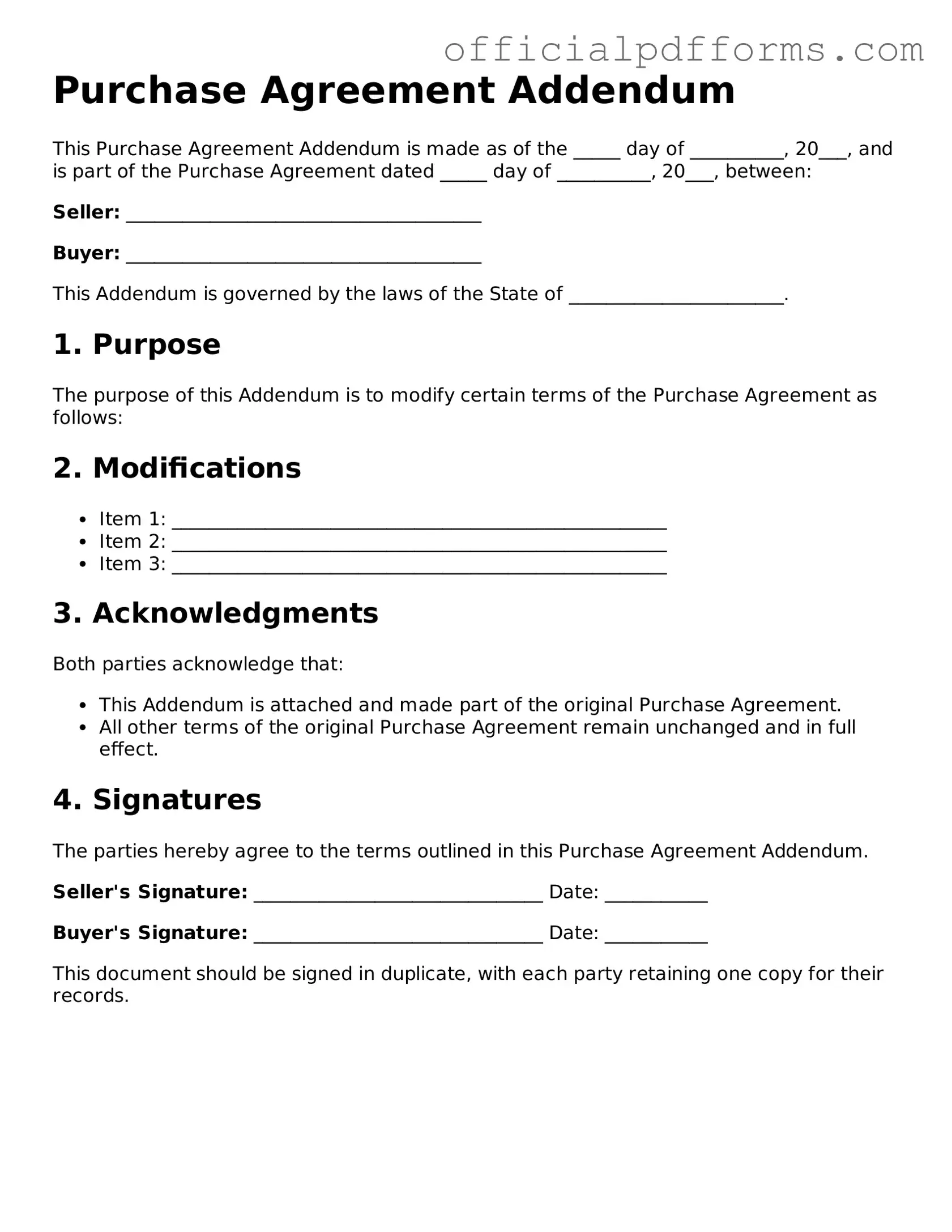Valid Purchase Agreement Addendum Document
The Purchase Agreement Addendum is a document that modifies or adds to the terms of an existing purchase agreement. It serves to clarify specific conditions or obligations that were not included in the original contract. Understanding how to properly complete this form is essential for ensuring that all parties are aligned on the terms of the transaction.
To get started, fill out the form by clicking the button below.
Access Form Online
